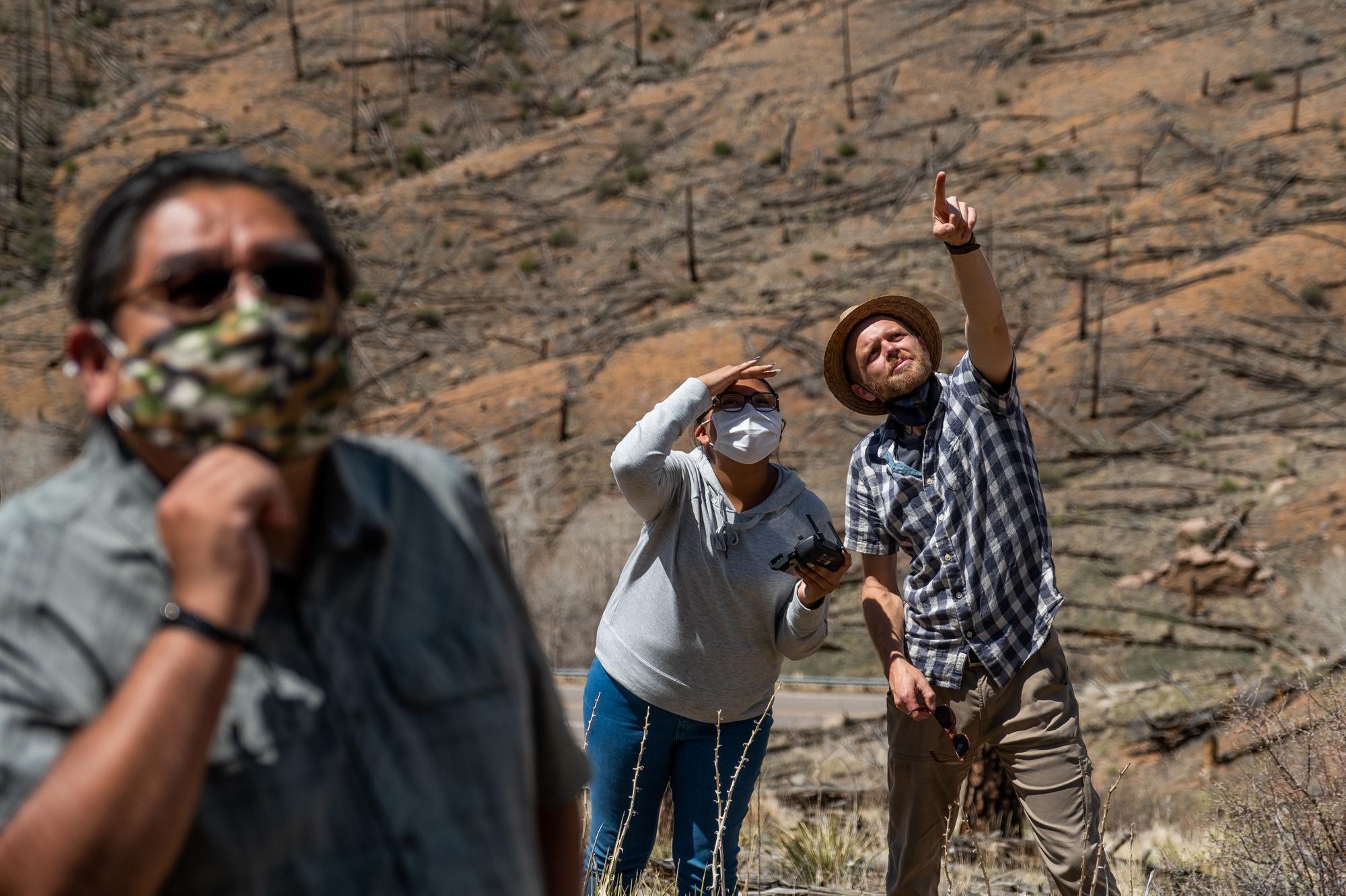
Eighth-grader Meadow Yellowhawk gently moved the controls, maneuvering her drone over fire-ravaged land.
“It looks dry,” she said.
The land is yellow, orange, and red. There are no green ponderosa pines or Douglas firs like there were 19 years ago here before the Hayman fire charred the land Yellowhawk stands on. This spot an hour and a half southwest of Denver is where one of the worst fires in Colorado history burned 138,000 acres in four counties, devastating wildlife, changing the landscape and leading to severe floods that washed out roads and bridges.
“Watch what happens when you get above the ridgeline and it opens up,” science teacher Creighton Hofeditz tells Yellowhawk, as Yellowhawk gazes at the sky.
The Hayman fire burned so hot, it burned ground cover to black soil.
“From up above, you can see the burnt trees, some still standing up and some burnt down,” Yellowhawk said.
The drone activity is part of Yellowhawk’s eighth-grade science unit on wildfires. Getting out onto the land is an important part of the American Indian Academy of Denver, a new public charter middle school in its first year of operation. Today, after weeks of studying the science of heat, how it travels in different ways, and the positive effects of Indigenous cultural burning practices, the students are getting a close-up look at the aftermath of wildfires.
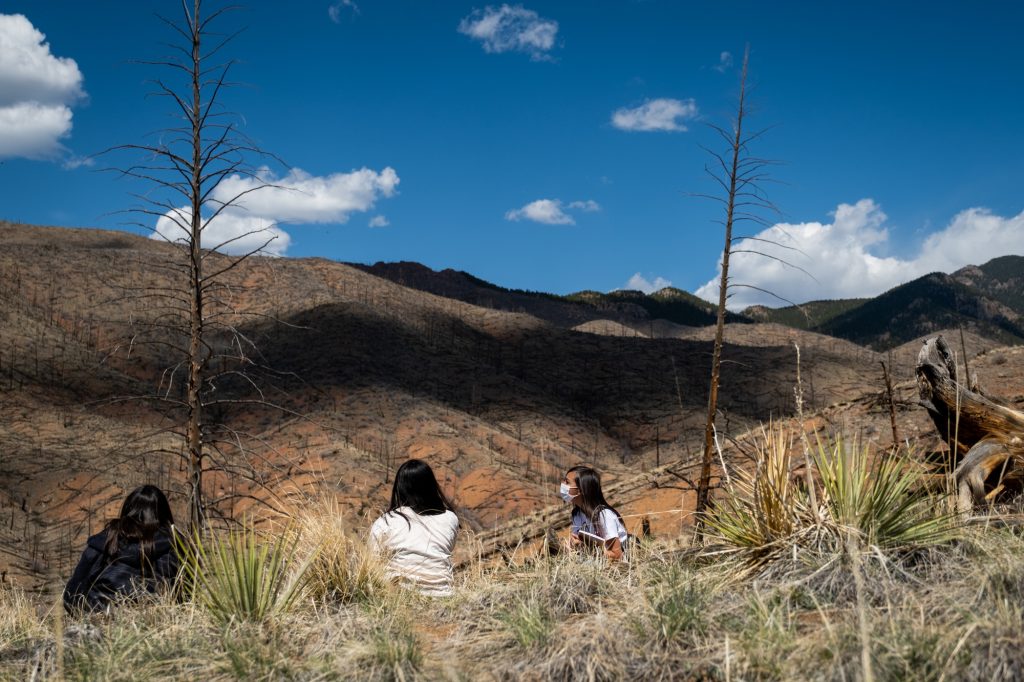
Though the land seems barren now, Hofeditz tells the kids to look for what is on the land.
“Are there trees, are there bushes, are there plants and wildflowers … do we see hawks, do we see chipmunks, what other species?” he asked.
As the middle school students head up the mountainside in the morning heat and black hoodies, Hofeditz cautioned them to walk lightly because of the post-fire erosion.
Right away the kids see deer and goats.
“I saw a lizard!” exclaimed one student. “I did too!” said another.
“Hey mister I found a bone!”
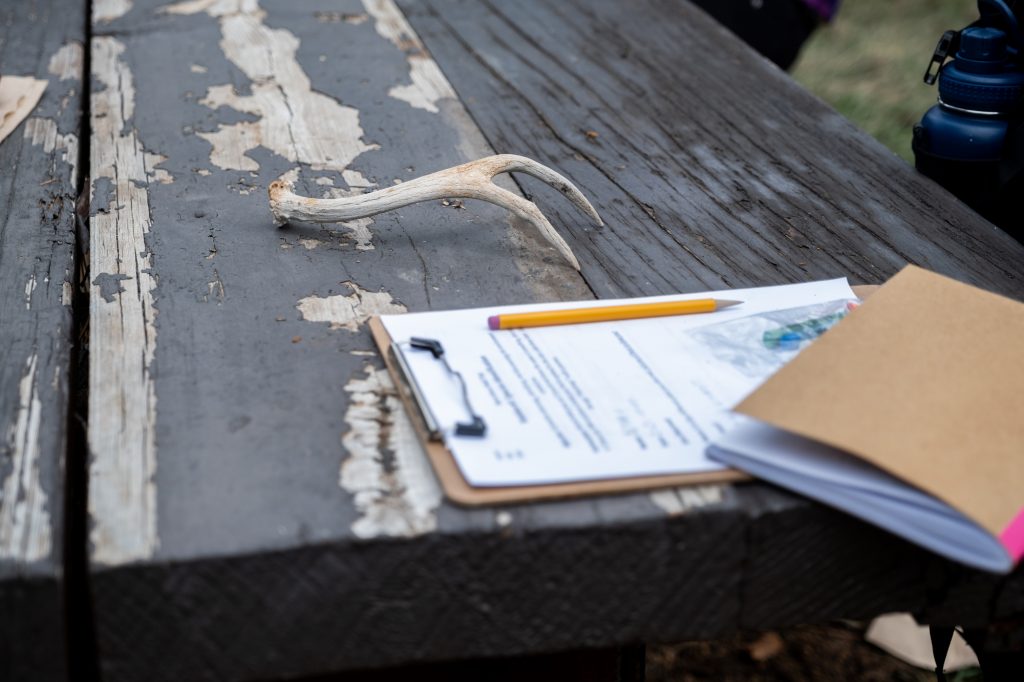
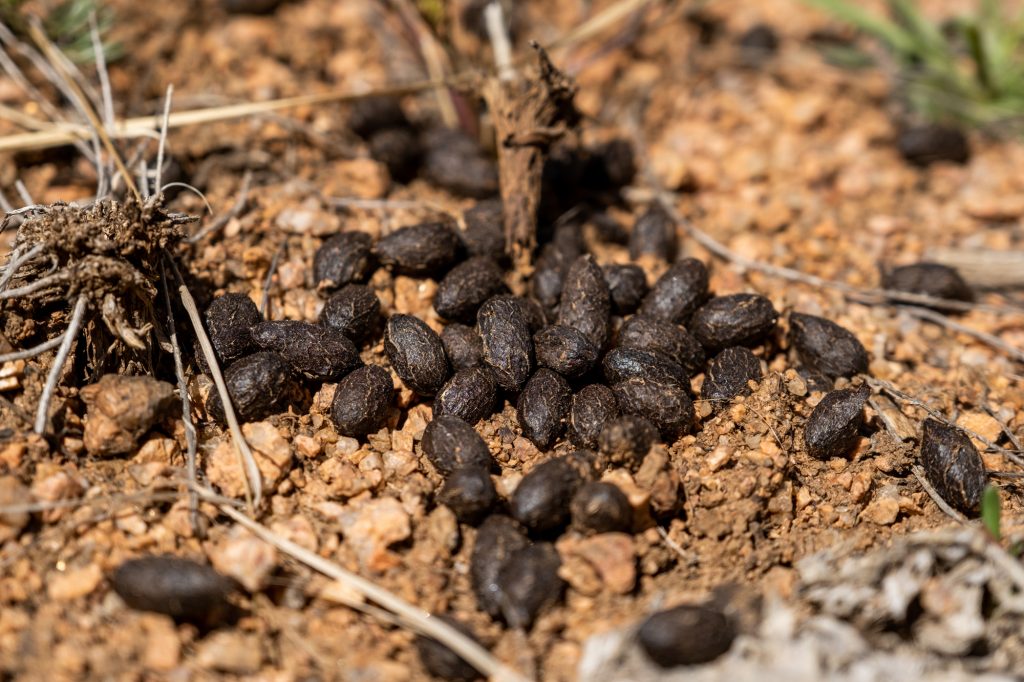
Poop is big.
“Is that poop?” asks a kid, pointing. “That is poop,” said Hofeditz.
The students catalog on worksheets what they see. Some sit down on burnt logs by themselves, quietly sketching what they see in pastels: a small purple wildflower, a bee, antlers, or pale-yellow grasses.
The American Indian Academy of Denver, with an enrollment of about 100 middle school students, is based on a STEAM curriculum — science, technology, engineering, arts and math. Founder and Head of School Terri Bissonette said Indigenous principles and knowledge are infused throughout the curriculum.
“We've been scientists, builders, innovators, artists, mathematicians, since the beginning of time,” said Bissonette, a member of the Gnoozhekaaning Anishinaabe tribe of the Midwest. “It’s really about reclaiming the genius of our ancestors. It's about bringing that into a 21st-century format so that our kids can see its relevance. They can see how that it works in their lives, and they can carry it forward.”
Can Native ways inform wildfire management today?
A clear example of how ancestral Indigenous views have relevance today is Indigenous knowledge and practices about wildfire.
“Back when Indigenous people were on their land, they practiced controlled burning,” explained eighth-grader Rose Leyba.
Native peoples set up a perimeter and burned within it, clearing out underbrush. New plants would grow back and replenish the forest, she said. When white settlers arrived, Leyba said they brought a different philosophy on fire.
“It had a different meaning than it does for the Indigenous people,” she said, such as using the science of fire for weapons or burning things that weren’t medicine.
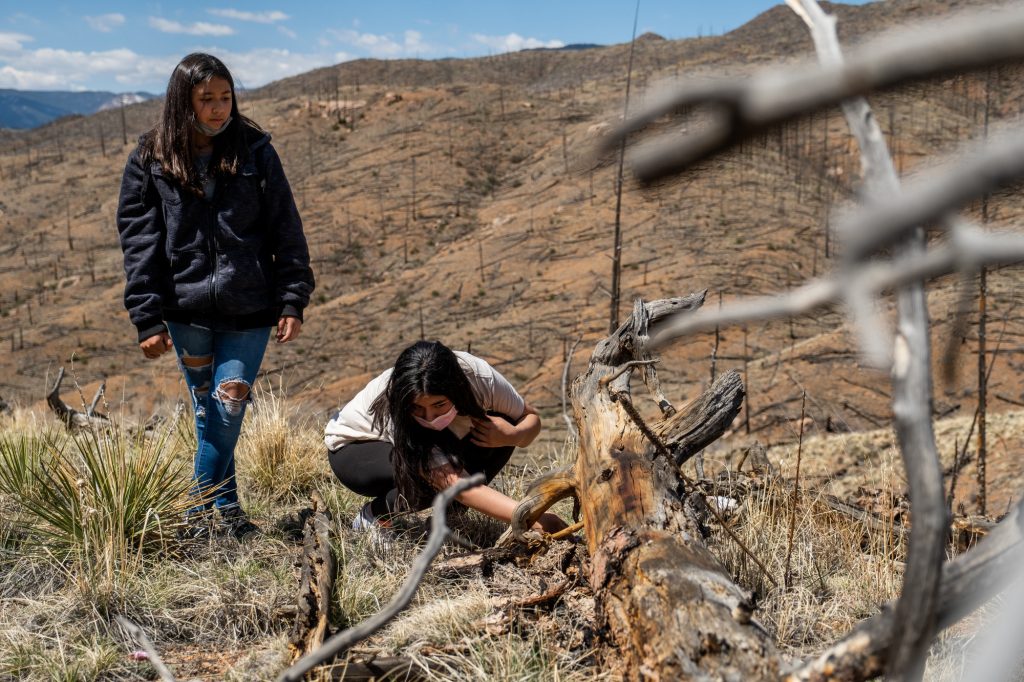
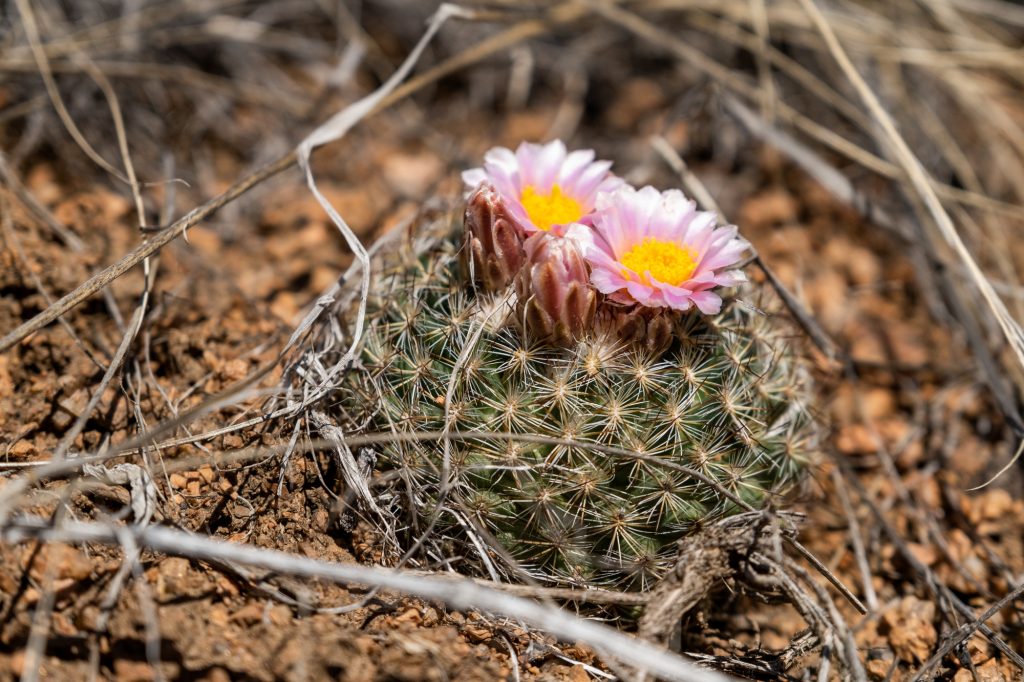
And the modern view on wildfires? Suppress them at all costs. Without the periodic fires, the forest lost an important control mechanism. The forest in the Hayman fire was unnaturally dense, adding fuel to an already dangerous situation. To better understand fire in Colorado, the students studied wildfires around the world — and how Indigenous views on wildfire are starting to influence fire management strategies in places like Australia and California.
In a learning unit on water, students explored where water comes from, what makes water clean or dirty, what role it plays in Indigenous cultures, and the Mni Wiconi or “water is life” movement of the Standing Rock Sioux Tribe.
In an Earth unit, students explored weather, erosion and geologic formations, as well as their connection to sacred sites around the continent, the processes that created the site and the stories around it. In a unit on the sky, not only did students study the atmosphere and stars, but they learned about ancient Polynesian wayfinding, which used the stars, currents and wave patterns to help the Native people there navigate on the open seas.
“Experiencing science as different perspectives on the same idea … avoid saying, ‘This is a fable or myth,’ — it’s a different way of understanding the world,” Hofeditz said.
The teachers try to personalize science as much as possible, encouraging the students to not just think about science abstractly, but “What is your relationship to the moon? To this constellation? To the water that's nearby?”
Down the mountainside, other groups of students are checking out how moist the soil is, which could be a clue as to why trees haven’t grown back.
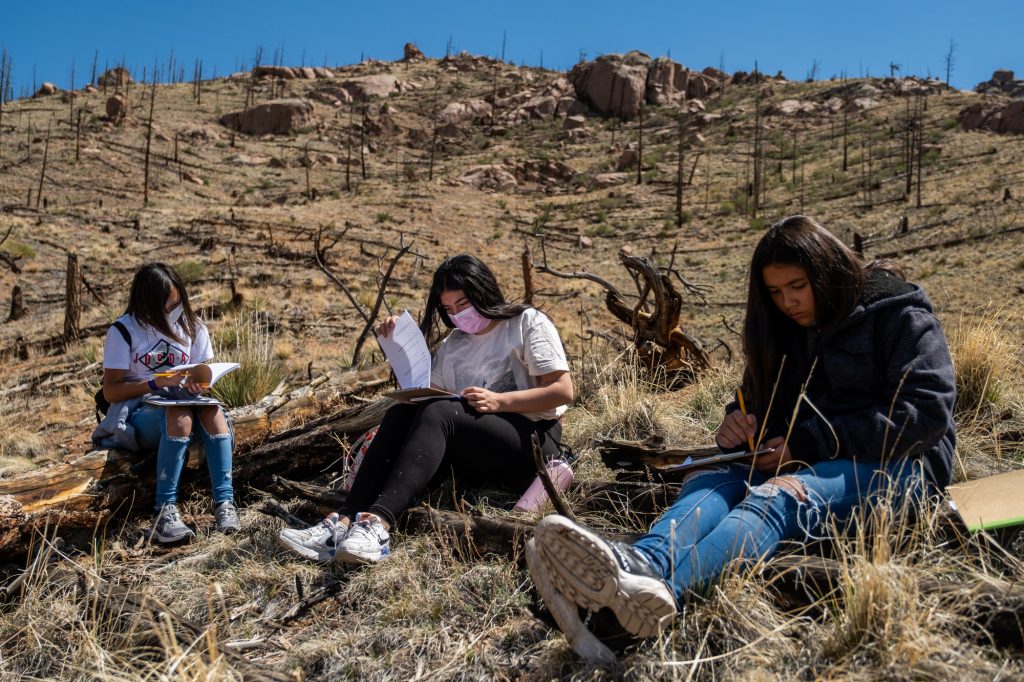
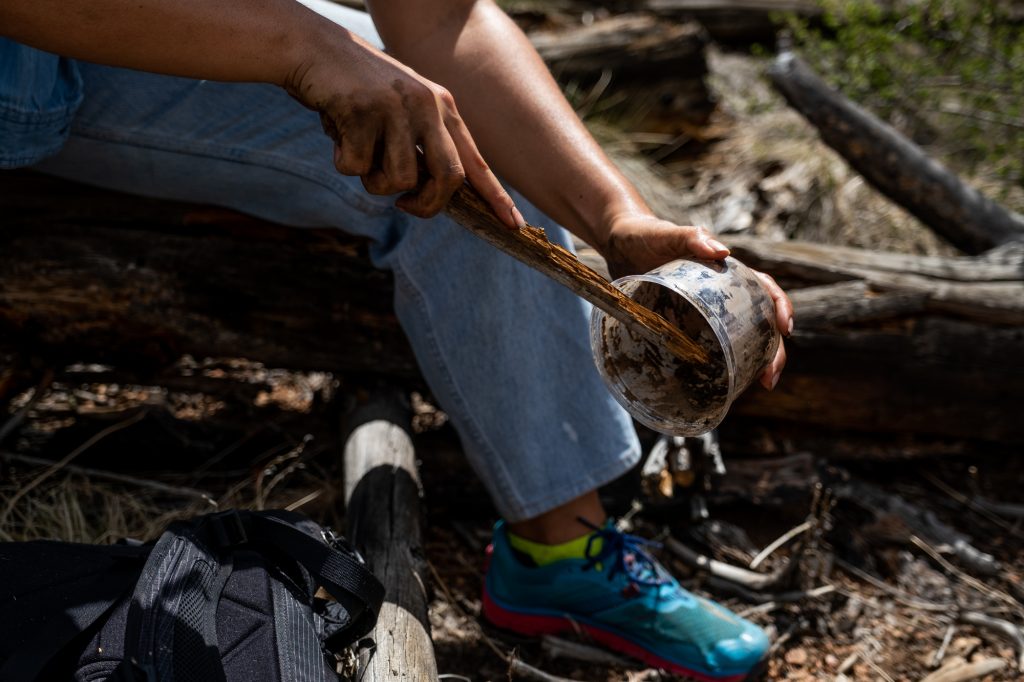
Joe Ortiz and Sean Demarrius dig a hole, add water and form a mud ball. It falls apart.
“It’s very sandy, lots of grains, not much clay like we were hoping for,” said Ortiz, who said he loves the school’s focus on “real-world problems and issues.” He said the intense heat of the fire — coupled with climate change — left the area without any moisture. The fire was so hot it eliminated the seedbed. Not finding clay also suggests there’s been a lot of erosion since the fire.
But, as students scan the landscape, they see new plants that weren’t in the forest before — there’s yucca and sage.
“I want them to understand the process of regeneration and healing of the land and what makes that possible, what makes it not possible,” Hofeditz said.
Head of School Terri Bissonette is explicit that this is not a field trip. It’s land-based learning.
“It's really focused on giving kids the opportunity to develop a relationship with the land and water around them,” Bissonette said. “People who have a deep relationship with the land and water have a deep understanding of why it's so important to take care of it. That’s really what we as Indigenous people have been doing since the beginning of time.”
Roots Of A New School
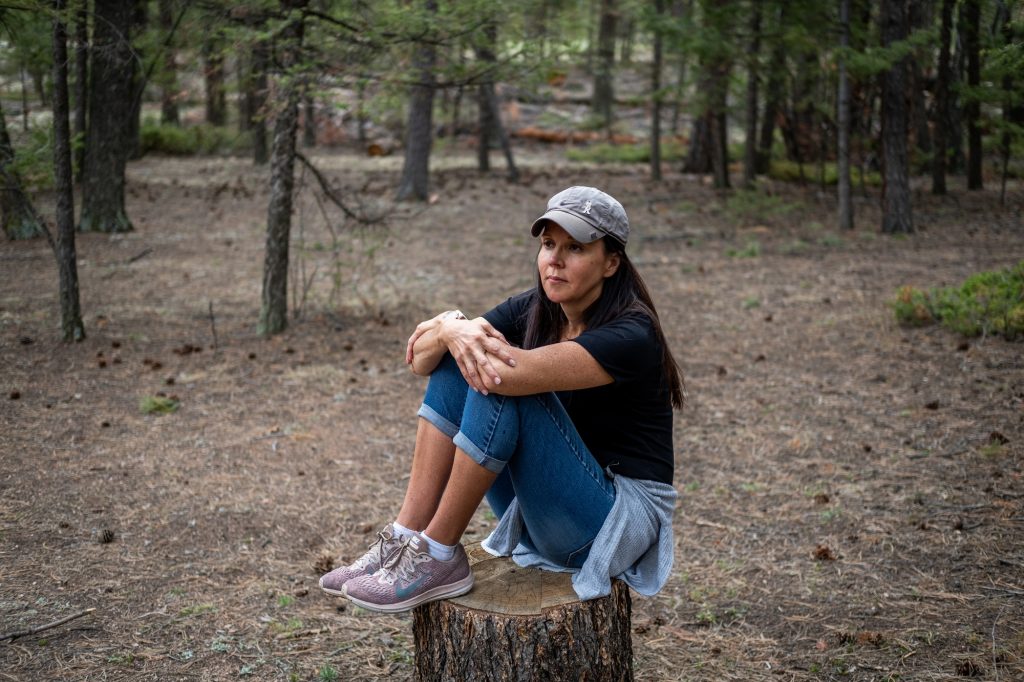
Terri Bissonette was dissatisfied. She’d been watching the graduation rate of Indigenous students for years. Just under sixty percent of the roughly 600 Indigenous students in Denver Public Schools graduate. Those numbers are similar for Indigenous students across the United States.
Several years ago Bissonette traveled to Albuquerque to visit the Native American Community Academy. She said the school eliminated the achievement gap between white students and Indigenous students. It took 11 years. Graduation rates there are “outstanding,” Bissonette said. She said the school is very community-driven, tailoring its programming to what the community needs.
“It was really a life-changing experience for me,” she said.
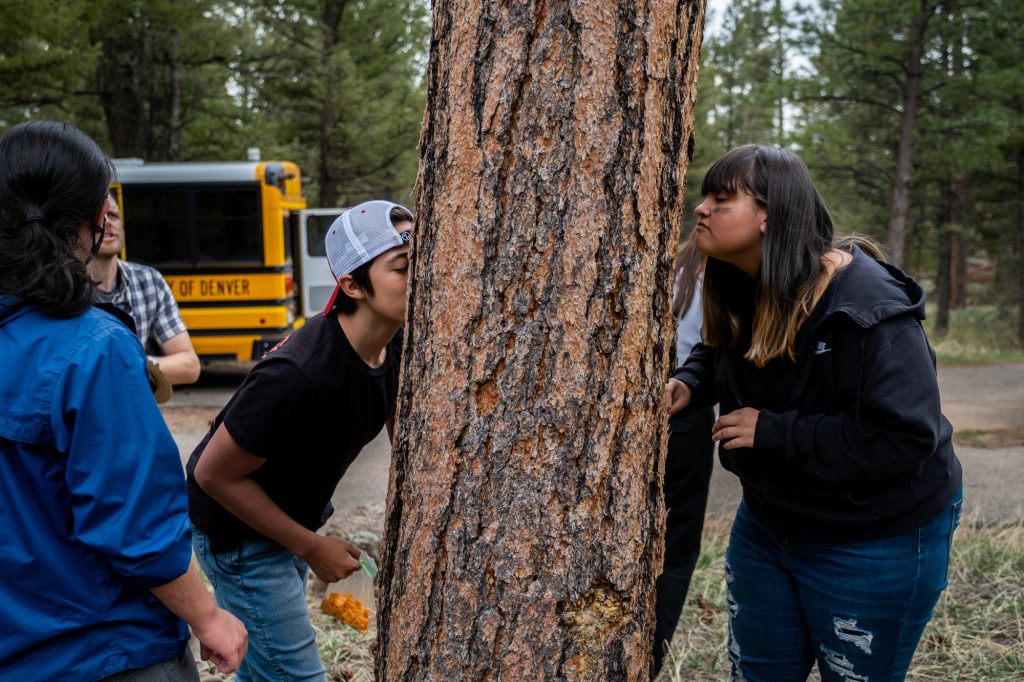
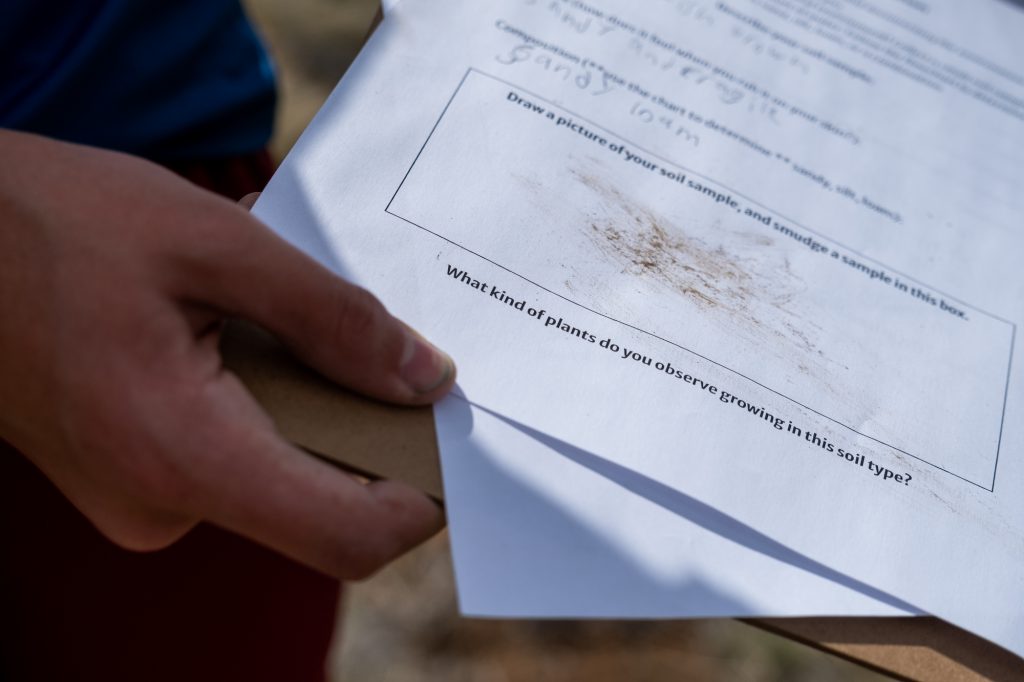
Bissonette returned to Denver full of hope. A founding committee of about nine people listened to the community. Its members said that not only did they want to raise the graduation rate and lower achievement gaps, it wanted a lot more — to foster a place where it was safe for Indigenous people to express their cultural identities, to offer social and emotional support, and to instill a sense of belonging among the students.
“What we heard loud and clear was that our Indigenous students do not feel like they belong in the schools that they're in,” she said. “And it didn't matter whether they were doing well academically or not. They felt like they didn't belong. They had to put their self-identity to the side at the school door in order to navigate through.”
Early results are promising. Bissonette said the same number of students who started the year at the American Indian Academy of Denver are finishing
As the morning gets hotter, the students climbed higher up the mountain.
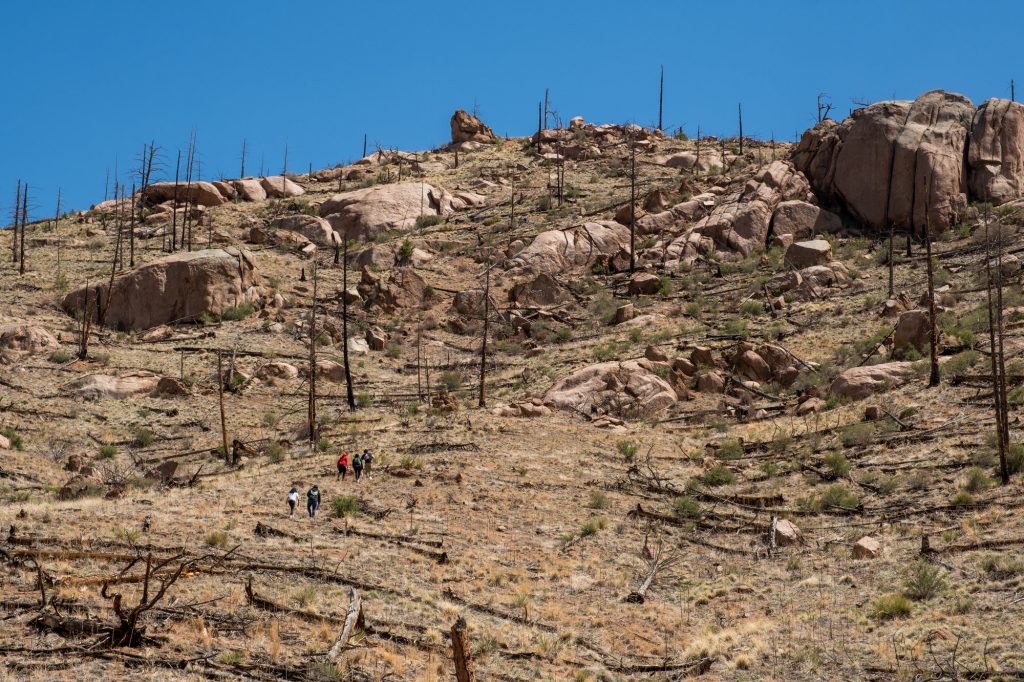
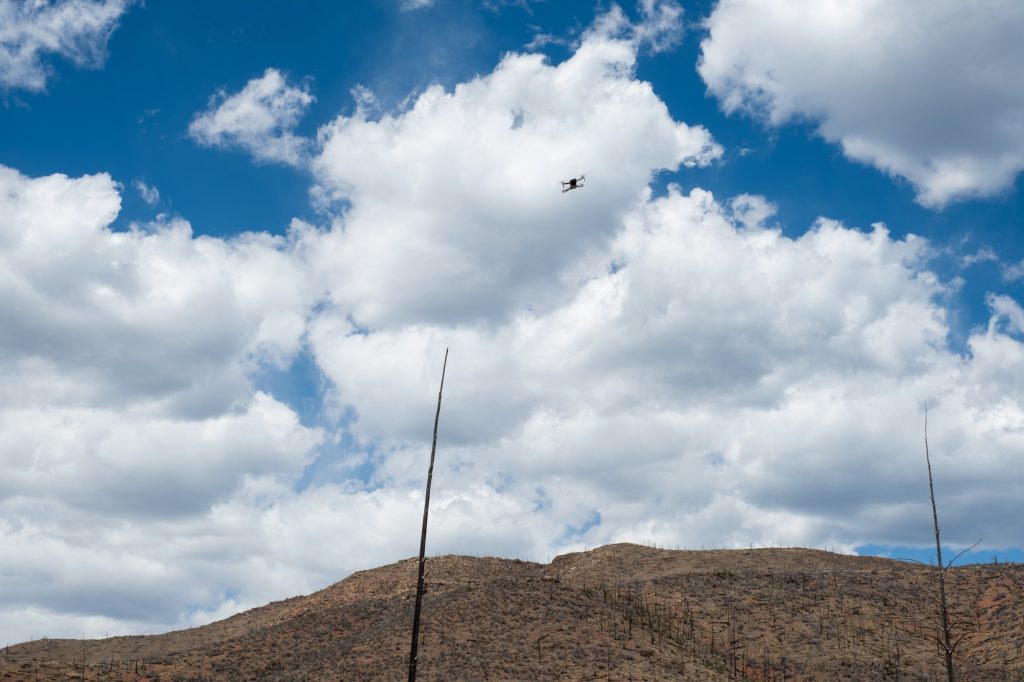
They like the fresh air. They discover moss on rocks. They’re on the lookout for wildlife. The students say they’re more comfortable at this school than other schools they attended.
“I like going to a smaller school,” said Axel Wolf, who identifies as Ponca and Ojibwe, with a little bit of Lakota. “It just feels like you’re less lost and forgotten because at my old school I just didn’t fit into a group that much.”
Other students said teachers at the Denver school notice when they get behind and give them the extra help they need.
“You feel kind of like a safe space because you’re with people who are like you, you feel open because everyone around you is like you, so you feel kind of at home,” Joe Ortiz said.
He said there were cliques at his old school. At the academy, they have talking circles at lunch.
“It makes me feel more comfortable knowing that people know what some of us have gone through and have and have had to deal with … about everyone’s life being different from others,” Araya Torres said.
Student Christine Rodriguez said the school is making her want to learn more about her Indigenous background. Her mom was a dancer.
“I used to want to dance when I was little, but as I got older, I started to grow away from it and coming back here it’s like reconnecting with it,” Rodriguez said.
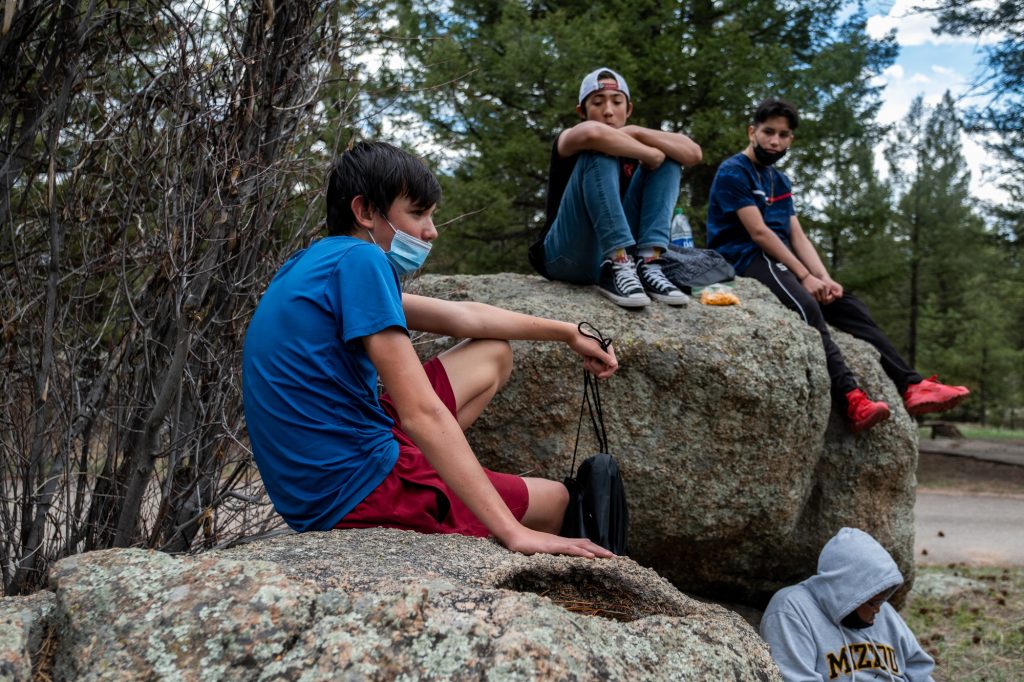
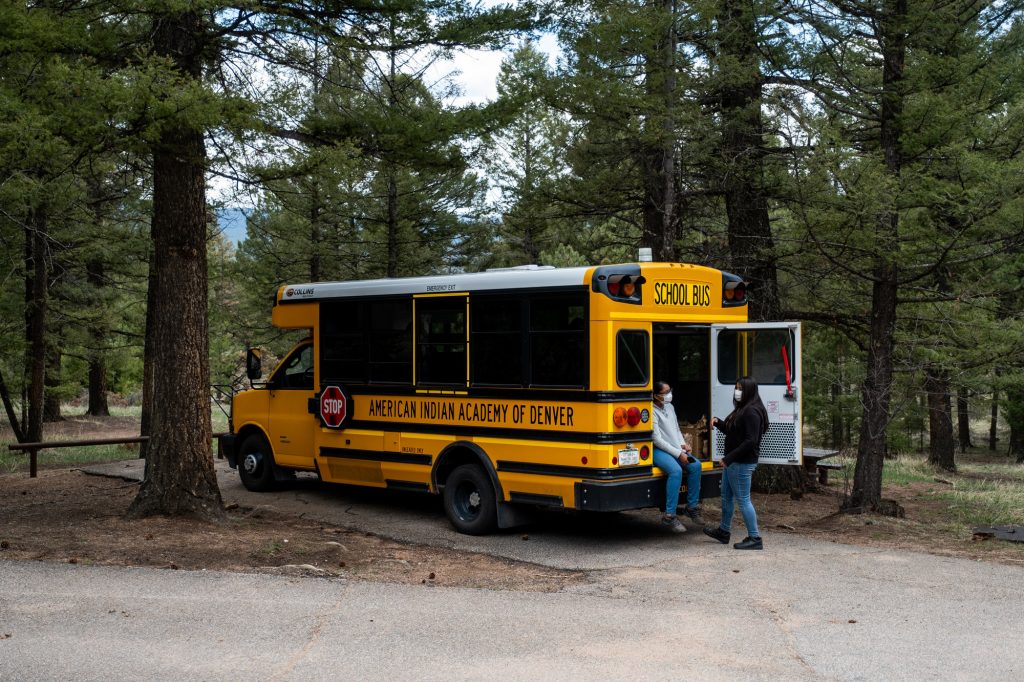
As the outing ended, the students munched on lunch in a shadier, healthy part of the forest, sharing with each other what they learned. Before boarding school buses to go back to Denver, a teacher motioned the students over to smell the sap on ponderosa pine. The kids crowd around the tree — and breathe in — deeply.
“Ah, I can smell it now!” said one student, taking in the tree’s trademark scent, similar to baking vanilla or butterscotch cookies.
Students like Rose Leyba say learning about Indigenous traditions and knowledge is critical.
“If we don’t have anyone to keep carrying these traditions on and telling these stories and being able to teach the future generation their way — then we’re just going to be nothing special.”









